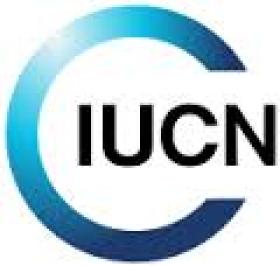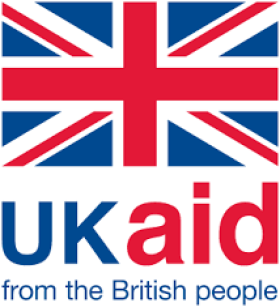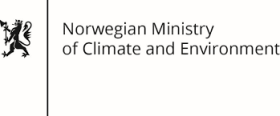
The Bonn Challenge barometer quantifies the progresses towards the implementation of the Bonn Challenge (a global effort to bring 150 million hectares of deforested and degraded land into restoration by 2020 and 350 million hectares by 2030) and provides information to accelerate action and address implementation bottlenecks.
There are a wide range of tangible benefits associated with Forest and Landscape Restoration (FLR), ranging from climate change mitigation, to biodiversity restoration and human well-being. Given this, the Bonn Challenge Barometer:
offers a systematic framework to take stock of progress, including hectares brought under restoration and a defined set of policy, regulatory, financial, and technical planning actions deemed important for achieving successful landscape restoration. It also supports pledgers to assess the impacts of their forest landscape restoration efforts and identify bottlenecks and resources to facilitate continued action.
(Source: Bonn Challenge Barometer - Progress Tracking Protocol, December 2018)
To date, 58 Governments, private associations and companies have pledged over 170 million hectares to the Challenge.

Source: http://www.bonnchallenge.org/.
Why is the Bonn Challenge Barometer Important?
There are a wide range of tangible benefits associated with Forest and Landscape Restoration (FLR), ranging from climate change mitigation, to biodiversity restoration and human well-being.
In particular, According to IUCN:
The restoration of 150 million hectares of degraded and deforested lands in biomes around the world – in line with the forest landscape restoration (FLR) approach – will create approximately US$ 84 billion per year in net benefits that could bring direct additional income opportunities for rural communities. About 90% of this value is potentially tradable, meaning that it encompasses market-related benefits. Achieving the 350 million hectare goal will generate about US$ 170 billion per year in net benefits from watershed protection, improved crop yields and forest products, and could sequester up to 1.7 gigatonnes of carbon dioxide equivalent annually.
(source: The Bonn Challenge (IUCN))
Read more about the benefits of Forest Land Restoration (FLR).
What is the status?
The Bonn Challenge was intially launched in 2011 by the Government of Germany and IUCN, with the target of restoring 150 million hectares of degraded and deforested lands around the world by 2020. The Challenge was then endorsed and extended by the New York Declaration on Forests at the 2014 UN Climate Summit, aiming at restoring 350 million hectares of degraded land by 2030.
The Bonn Challenge is not a new global commitment but rather a practical means of realising many existing international commitments, including the CBD Aichi Target 15, the UNFCCC REDD+ goal, and the Rio+20 land degradation neutrality goal.
To date, 58 Governments, private associations and companies have pledged over 170 million hectares to the Challenge. It is estimated that with the actual level of commitment, 15.66 Gigatonnes of CO2 equivalent can be sequestred, while creating economic activities for 48,424 million USD.
What is the Methodology?
The Barometer is based on a Progress Tracking Protocol. To ensure broad applicability and utility to pledgers, the Bonn Challenge Barometer was designed to adhere to a set of guiding principles, including flexibility, minimizing reporting burden, and enabling and facilitating action on Bonn Challenge commitments. According to the Protocol:
The Bonn Challenge Barometer is structured into two main components, comprised of an initial assessment of key enabling conditions determined crucial for ensuring long-term success of FLR efforts and a final reporting section that focuses on progress and impacts. These are further outlined below.
- Success Factors: Progress made towards action on Bonn Challenge Commitments on policy, institutional arrangements, financial and technical planning parameters.
- Results and Benefits: Progress with implementation of FLR. The objectives for FLR can be varied and this parameter captures the associated benefits accrued.
Underlying the Bonn Challenge is the Forest Landscape Restoration (FLR) approach, which aims to restore ecological integrity at the same time as improving human well-being through multifunctional landscapes. To serve the formation of the Bonn Challenge goal, IUCN commissioned a global analysis of restoration opportunity, undertaken with WRI and the University of Maryland. This analysis produced the World of Opportunity map, which found up to two billion hectares of degraded land that could offer opportunities for restoration.
Source: WRI and University of Mayland, 2011 - For more information on the map of Forest and Landscape Restoration opportunities, see: https://landportal.org/library/resources/forest-and-landscape-restoration-opportunities.
Which data from the Bonn Challenge Barometer are on display on the Land Portal?
The Land Portal presents only a selection of aggregated indicators from the Bonn Challenge Barometer measured at the country level. In particular, this portfolio features the following indicators:
- Area commited under restoration in hectares counted toward Bonn Challenge Commitment (target)
- Area brought under restoration in hectares counted toward Bonn Challenge Commitment (actual)
- Cumulative estimated gross removal of CO2 from FLR activities included under the Bonn Challenge Commitment since 2011.
- Funding dedicated to facilitate and support FLR activities included under the Bonn Challenge Commitment.
- Number of jobs created resulting from FLR activities included under Bonn Challenge Commitment
Related content on the Land Portal
A World of Opportunity
More than two billion hectares of the world’s deforested and degraded landscapes are likely to offer potential for restoration — a vast opportunity to reduce poverty, improve food security, reduce climate change, and conserve biodiversity
Assessing IUCN's contribution to Uganda's forest landscape restoration processes
In 2017, it was against this backdrop that IUCN commissioned an independent study to assess its overall contribution to FLR in Uganda, and in relation to the contributions of other stakeholders within the forest sector. The end-point of this contribution analysis was the publication and adoption of the Uganda ROAM report by the government of Uganda.
Bonn Challenge and India. Progress on restoration efforts across states and landscapes
The protection and revival of degraded and deforested land is the need of the hour. In order to tackle the issues that arise as a consequence of degradation and deforestation, principles of forest landscape restoration are being globally promoted. The Bonn Challenge is a global effort to bring 150 million hectares of deforested and degraded land into restoration by 2020 and 350 million hectares by 2030. The government of India made a Bonn Challenge pledge to bring under restoration 13 million hectares of degraded land by 2020 and an additional 8 million hectares by 2030.
Forest and Landscape Restoration Opportunities
The Atlas of Forest Landscape Restoration Opportunities represents a first-ever global approximation of where degraded forest lands have the potential to be restored—opportunities to reduce poverty, improve food security, mitigate climate change, and protect the environment. The Atlas was produced by World Resources Institute in collaboration with the University of Maryland and the International Union for Conservation of Nature as a contribution to the Global Partnership on Forest Landscape Restoration. The maps in the atlas are presented at a resolution of 1 km.
The New York Declaration of Forests: Declaration and Action Agenda
This document summarizes the wealth of announcements on forests at the UN Secretary-General’s Climate Summit, including the New York Declaration on Forests, its associated voluntary Action Agenda, and a large number of supportive concrete action announcements.
Bonn Challenge Barometer of Progress: Spotlight Report 2017
The Bonn Challenge is a global effort to bring 150 million hectares (Mha) into restoration by 2020 and 350 Mha by 2030. Underlying the Bonn Challenge is the forest landscape restoration (FLR) approach. The Bonn Challenge is a voluntary, non-binding initiative launched to advance the restoration movement and in recognition of the importance of forest landscape restoration for meeting national priorities and international commitments. To date 47 contributors have pledged more than 160 Mha to the Bonn Challenge.
Global carbon dioxide removal rates from forest landscape restoration activities
Background
Partners:
Donors:















